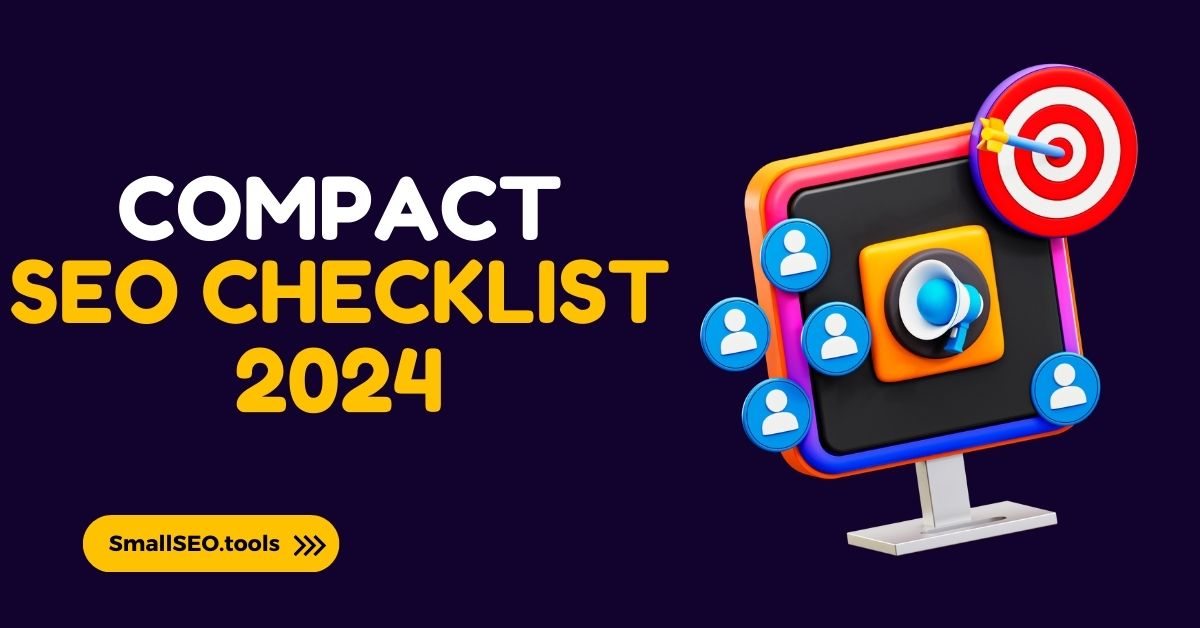Compact SEO Checklist 2024
This guide is essentially your roadmap to mastering SEO in 2024. It takes you through a checklist of must-have SEO strategies, from making sure your site is secure with HTTPS to optimizing for mobile users, and even incorporating AI to better meet search engine standards. It's about understanding the importance of structured data, making your content friendly for voice searches, and not forgetting the basics of local SEO. Think of it as a checklist that not only highlights what's crucial for SEO success but also embraces the future trends that are shaping how we approach online visibility. With this guide, you're equipped to ensure your website stands out from others.
Website Launch
- Use HTTPS Protocol: Emphasize security and user trust by migrating to HTTPS, crucial for protecting data integrity and confidentiality.
- Set the Canonical Domain Name: Avoid duplicate content issues by specifying your preferred domain version, enhancing search engine understanding.
- Choose an SEO-Friendly CMS: Opt for platforms with built-in SEO capabilities for easier management of meta tags, content, and structure.
- Generate SEO-Friendly URLs: Implement readable and keyword-rich URLs to improve user experience and search engine indexing.
- Set Up Analytics Tracking Codes: Integrate tools like Google Analytics for insights into traffic patterns, visitor behavior, and conversion tracking.
- Sync Your SEO Tools with Google: Utilize Google Search Console and other SEO tools for monitoring website performance and identifying improvement opportunities.

Keyword Research
- Identify Top-Ranking Keywords and Competitors: Use tools to discover what you're already ranking for and who your direct competitors are.
- Find New Keyword Ideas: Leverage keyword research tools to uncover new opportunities and gaps in your content.
- Choose Easier-to-Rank Keywords: Focus on low-competition keywords as entry points for establishing visibility.
- Identify Long-Tail Keywords: Target specific, longer queries that are less competitive and more conversion-friendly.
- Determine Keyword Intent: Understand the searcher's intent to align content with what users are looking for.
- Map Keywords to Content: Strategically assign keywords to specific pages to guide content creation and optimization.
On-Page Optimization
- Optimize Meta Titles and Descriptions: Craft compelling and keyword-rich meta tags to improve click-through rates.
- Optimize the Main Content: Ensure content quality, relevance, and keyword optimization without overstuffing.
- Add Optimized Multimedia: Incorporate relevant images, infographics, and videos, optimized for speed and accessibility.
- Add Structured Data: Use schema markup to help search engines understand and display your content in rich snippets.
Website Structure Improvement
- Check Your Site Structure: Aim for a logical hierarchy that enhances user navigation and search engine crawling.
- Make Important Pages Accessible: Ensure key content is no more than a few clicks from the homepage.
- Add More Internal Links: Boost SEO by linking to important pages from within your site’s content.
Technical SEO Checklist
- Review Sitemap and Robots.txt: Ensure these files are accurate and optimized for search engine crawling.
- Fix Broken Pages: Address 404 errors and redirect chains that harm user experience and link equity.
- Detect Uncrawlable Elements: Ensure content isn't hidden within uncrawlable JavaScript or Flash.
- Check Site Speed: Utilize speed optimization techniques to meet Core Web Vitals standards.
- Ensure Mobile-Friendliness: Prioritize responsive design for ranking in mobile search.
Site Authority
- Fix Spam Issues: Clean up cloaking, doorway pages, and link farms that damage your site's reputation.
- Review Backlink Quality: Analyze and cultivate a portfolio of high-quality, relevant backlinks.
- Manage Risky Backlinks: Use tools to identify and disavow harmful backlinks.
Link-Building & PR Outreach
- Find Link-Building Prospects: Identify and engage with potential sites for quality backlinks.
- Backlink Gap Technique: Analyze competitors’ backlinks to find opportunities.
- Link Outreach Campaign: Develop personalized outreach for link-building efforts.
- Social Media Profiles: Complete and active profiles can enhance visibility and indirect SEO benefits.
Local SEO
- Track Local Rankings: Monitor your performance in local search results.
- Optimize Google Business Profile: Ensure accurate and comprehensive listings.
- Serve the Right Language Version: Use hreflang tags for multilingual sites.
- Build Local Citations: Increase your presence in local directories and listings.
SEO Results Tracking
- Track Keywords and Visibility: Use tools to monitor ranking changes and visibility.
- SEO Goals for Landing Pages: Set and measure specific objectives within your analytics platform.
leave a comment
Please post your comments here.SEARCH
-
Popular SEO Tools
- Paraphrasing Tool
- Plagiarism Checker
- Article Spinner / Rewriter
- Keyword Position Checker
- Grammar Check
- Domain Authority Checker
- Pagespeed Insights Checker
- Reverse Image Search
- Page Authority checker
- Backlink Checker
- Alexa Rank Checker
- Backlink Maker
- Domain Age Checker
- Website Ping Tool
- Website Seo Score Checker
- Keyword Density Checker
- Website Page Size Checker
- Word Count Checker
- Mozrank Checker

 ™
™